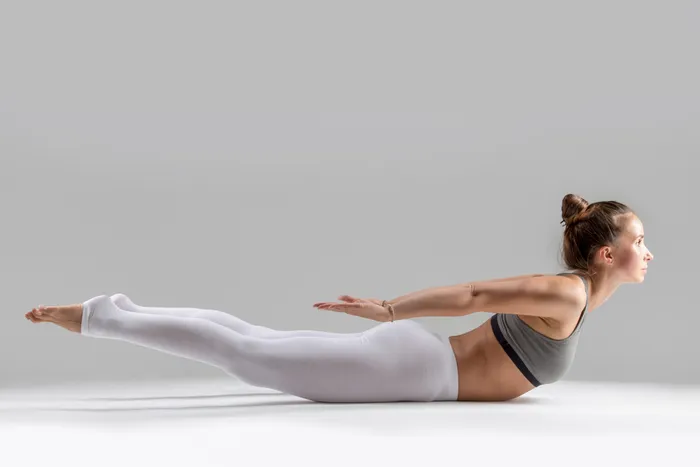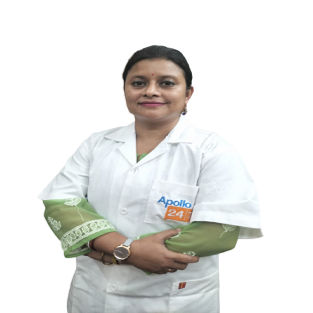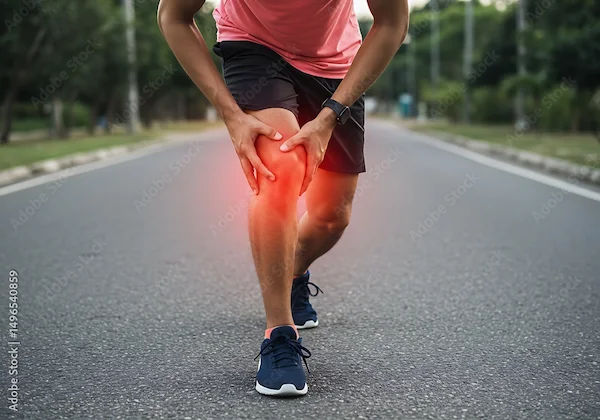Shalabhasana (Locust Pose): Benefits and How to Practice It Safely
Shalabhasana yoga is simple: benefits, safe step-by-step, and FAQs. Build a stronger back with beginner-friendly back strengthening poses.

Written by Dr. Siri Nallapu
Reviewed by Dr. Dhankecha Mayank Dineshbhai MBBS
Last updated on 18th Nov, 2025

Introduction
If your back feels stiff or tired after long hours of sitting, you’re not alone. Gentle, targeted movement can help. Shalabhasana yoga (Locust Pose) is a simple, floor-based exercise that strengthens the muscles along your spine, glutes, and hamstrings. It’s one of the classic back strengthening poses taught in yoga and physical therapy settings because it helps build support for your lower back and improves posture when done consistently and safely.
Below, you’ll learn what Locust Pose is, how to practice it step by step, how to modify it for your body, who should be cautious, and how to add it to a balanced routine. You’ll also find FAQs and trusted resources from organizations such as Harvard Health Publishing, Mayo Clinic, Cleveland Clinic, the CDC, and the WHO.
What is Shalabhasana (Locust Pose)?
Shalabhasana (sha-la-bha-suh-nuh), or Locust Pose, is a gentle back extension done lying on your belly. You lift your chest and legs slightly off the floor while keeping the front of your pelvis grounded. The pose targets the “posterior chain”—the muscles along the back of your body—including the spinal extensors, glutes, and hamstrings. It can be practiced on its own or as part of a short series of back strengthening poses.
Potential Benefits of Shalabhasana Yoga
Evidence suggests that yoga and other mind–body practices can help improve low-back comfort and function when practiced regularly and appropriately. While no single pose is a cure, Locust Pose can play a helpful part of a well-rounded plan. Potential benefits include:
Strengthens key supportive muscles
- Engages the back extensors that help you sit and stand upright
- Activates glutes and hamstrings for better hip and pelvic support
- Supports posture
- Counterbalances the forward rounding many of us develop from sitting and screen time
- Encourages mobility and mindful movement
- Gentle back extension can complement stretches for hip flexors and the front body
- Can be calming
- Slow, steady breathing and focused movement may help reduce stress, which is linked to muscle tension
Important note: If you have ongoing back pain or a diagnosed spine condition, speak with a clinician or physical therapist for personalized advice. Research on yoga for low back pain shows potential benefits, but correct technique and an individualized plan matter.
Who Should Be Cautious or Avoid This Pose?
Locust Pose is low-impact, but it is not right for everyone. Consider the following:
- Pregnancy: After the first trimester, exercises that press your belly against the floor are generally not used. Ask your obstetric provider about safer options.
- Recent abdominal surgery or acute abdominal conditions: Avoid belly-down positions and exercises that increase abdominal pressure until cleared by your clinician.
- Spine or hip conditions: If you have a herniated disc, significant osteoporosis, spinal stenosis, spondylolisthesis, or a recent back injury, get guidance from a healthcare professional before practicing back extensions.
- Hernia or pelvic floor concerns: Ask your clinician or physical therapist whether belly-down strengthening and breath strategies are appropriate for you.
- Any sharp, radiating, or worsening pain: Stop the pose and seek professional guidance.
How to Practice Locust Pose Safely? Step by Step
Before you begin
- Warm up for 3–5 minutes with gentle movements:
- Cat–Cow or pelvic tilts on hands and knees
- Sphinx Pose (lying on your belly with forearms on the floor) to explore light extension
- Shoulder rolls and gentle chest-opening with your hands clasped behind you (optional)
Step-by-step instructions
1) Set up:
- Lie on your belly with legs hip-width apart and straight.
- Place your arms alongside your body, palms facing down, or hands gently pressing into the floor near your hips.
- Rest your forehead on the mat. Lengthen your tailbone toward your heels to avoid crunching the low back. Gaze stays down to keep the neck neutral.
2) Engage:
- On a slow inhale, lightly draw your lower belly in toward your spine for support (do not hold your breath).
- Press the tops of your feet and pelvis gently into the mat to create a stable base.
3) Lift:
- Continue inhaling as you lift your chest, shoulders, arms, and (optionally) both legs a few inches off the floor.
- Keep the back of your neck long and your gaze down. Imagine reaching your toes straight back and your crown forward to lengthen as you lift.
4) Breathe and hold:
Hold for 5–10 slow breaths (or 10–30 seconds) without strain. If you feel pinching in the lower back, lower a bit or keep legs on the floor.
5) Lower and rest:
Exhale as you lower down with control. Turn your head to one side or stack your hands as a pillow. Rest for several breaths.
6) Repeat:
Do 2–3 rounds, resting in between.
Consult Top Specialists
Modifications and props
- Half Locust (beginner-friendly): Lift only your chest and one leg at a time. Alternate sides.
- Legs down: Keep your legs on the floor and lift only your upper body and arms.
- Blanket support: Place a folded blanket under your hip bones/pelvis to reduce pressure.
Arm position options:
- Arms by sides, palms down (most supportive)
- Arms reaching back with palms facing in (adds shoulder opening)
- Hands interlaced behind your back (only if your shoulders are comfortable)
- If the neck is sensitive: Keep the forehead hovering just off the floor and gaze down.
Common mistakes and how to fix them?
- Overarching the lower back: Think “length first, then lift.” Gently engage your lower abdomen and reach through your legs to distribute the extension along the whole spine.
- Lifting too high, too fast: Small, controlled lifts are more effective and safer than big movements.
- Holding your breath: Breathe steadily. Exhale fully to avoid bracing and straining.
- Chin jutting forward: Keep your neck long; gaze stays down.
How long and how often?
- Start with short holds (5–10 seconds) and 1–2 repetitions, especially if you’re new to back extensions.
- As your strength and comfort improve, work up to 2–3 sets of 15–30 seconds each.\
- Fit it into a consistent routine: Most adults benefit from regular activity across the week, including muscle-strengthening work at least two days per week. Locust Pose can be one small part of that plan.
How Shalabhasana Yoga Fits Into a Routine of Back Strengthening Poses?
Shalabhasana works well alongside other gentle movements that build strength and mobility around your spine and hips. A short, balanced mini-sequence might look like:
- Cat–Cow (mobility)
- Bird Dog (core and back stability)
- Sphinx or low Cobra (gentle extension)
- Shalabhasana (active back strengthening)
- Bridge Pose (glutes and posterior chain)
- Child’s Pose or Figure-4 stretch (release)
You can practice this 2–3 times per week, leaving at least a day between strength-focused sessions for recovery. If you’re also doing brisk walking, cycling, or other cardio, you’ll be aligning with general activity recommendations for health.
Safety Tips for Everybody
- Keep it pain-free: Mild muscle effort is normal; sharp or radiating pain is a signal to stop.
- Move with the breath: Avoid breath-holding or bracing; it can increase pressure in the abdomen and spine.
- Start small: Build range and strength gradually. Consistency beats intensity.
- Personalize the pose: Use modifications that feel steady and supported.
Check with a professional:
If you have back or neck conditions, are pregnant, or are recovering from surgery or injury, get individualized guidance from a healthcare professional or a licensed physical therapist.
How to Progress Over Time?
- Increase time under tension: Add a few seconds to each hold as your endurance improves.
- Add repetitions: Over weeks, move from 1–2 up to 2–3 rounds.
- Fine-tune form: Focus on even lifting through chest and legs, steady breath, and relaxed shoulders.
- Combine with whole-body training: Balance back strengthening poses with core, hip, and leg work, plus regular aerobic activity.
Consult Top Specialists
Consult Top Specialists

Dr Darshana R
General Physician/ Internal Medicine Specialist
15 Years • MBBS, MD, DNB (Internal Medicine), Diploma in Allergy, Asthma and Immunology , Fellowship in Diabetes
Bengaluru
Apollo Clinic, JP nagar, Bengaluru

Ms. Sreeparna Dey Dhara Deb
Dietician
10 Years • DNHE
Bansdroni
Siddhita Healthcare., Bansdroni

Ms. Sushma Jaiswal
Dietician
42 Years • M.Sc.(Food & Nutrition)
Bengaluru
Swasthya Nutrition, Bengaluru

Ms. Soma Saha
clinical nutrition
17 Years • B.Sc. - Home Science (Food & Nutrition), M.Sc. - Home Science (Food & Nutrition)
Kolkata
Dr Utsa Basu Clinic, Kolkata
(50+ Patients)

Ms. Malabika Datta
Dietician
17 Years • Msc. in Dietetics & Food Service Management
Kolkata
Dr Utsa Basu Clinic, Kolkata
(25+ Patients)
Consult Top Specialists

Dr Darshana R
General Physician/ Internal Medicine Specialist
15 Years • MBBS, MD, DNB (Internal Medicine), Diploma in Allergy, Asthma and Immunology , Fellowship in Diabetes
Bengaluru
Apollo Clinic, JP nagar, Bengaluru

Ms. Sreeparna Dey Dhara Deb
Dietician
10 Years • DNHE
Bansdroni
Siddhita Healthcare., Bansdroni

Ms. Sushma Jaiswal
Dietician
42 Years • M.Sc.(Food & Nutrition)
Bengaluru
Swasthya Nutrition, Bengaluru

Ms. Soma Saha
clinical nutrition
17 Years • B.Sc. - Home Science (Food & Nutrition), M.Sc. - Home Science (Food & Nutrition)
Kolkata
Dr Utsa Basu Clinic, Kolkata
(50+ Patients)

Ms. Malabika Datta
Dietician
17 Years • Msc. in Dietetics & Food Service Management
Kolkata
Dr Utsa Basu Clinic, Kolkata
(25+ Patients)
More articles from General Medical Consultation
Frequently Asked Questions
Is shalabhasana yoga safe for beginners?
Yes, if you start gently and use modifications. Keep the legs on the floor at first or try Half Locust (lifting one leg at a time). Stop if you feel sharp pain and seek guidance if you have any spine, hip, or abdominal conditions.
How long should I hold Locust Pose?
Begin with 5–10 seconds and repeat 1–2 times. Over time, you can work up to 15–30 seconds for 2–3 sets, as long as you can maintain good form and easy breathing.
Can Locust Pose help with low back pain?
Yoga, when appropriately chosen and practiced, may help improve chronic low back pain and function. Locust Pose can be part of that approach by strengthening supportive muscles. If you have active pain, consult a clinician or physical therapist for a customized plan.
What if I feel a pinch in my lower back during the pose?
Come down right away, shorten your range of motion, and focus on lengthening your spine before lifting. Try Half Locust or keep your legs on the floor. If pinching persists, stop and speak with a professional.
Is Locust Pose safe during pregnancy?
After the first trimester, belly-down positions are typically avoided in prenatal exercise programs. Ask your obstetric provider for alternatives that strengthen your back safely, such as hands-and-knees variations.




